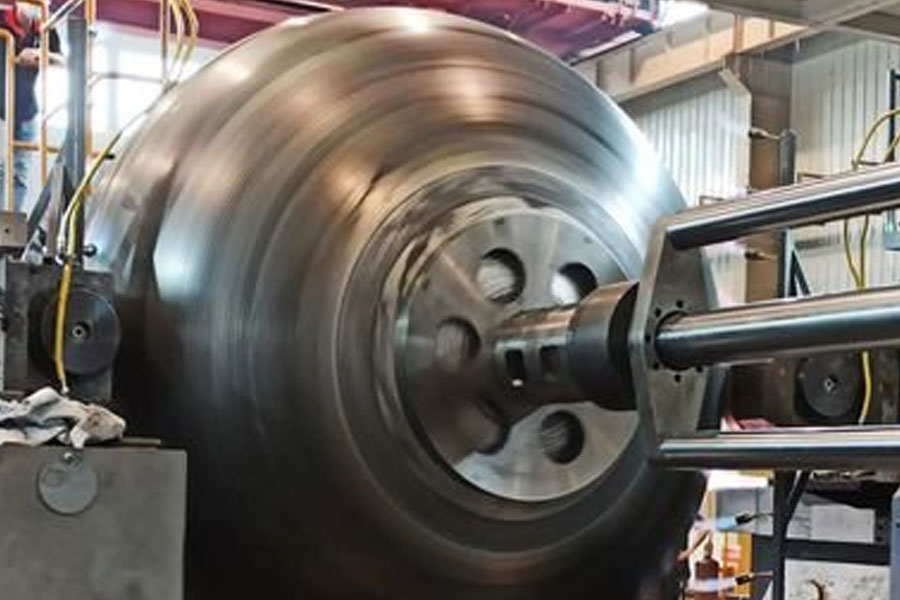Many metal materials can be used for CNC spinning, such as aluminum, iron, copper, stainless steel, titanium, molybdenum, etc. We choose metal discs and metal pipes as raw materials for spinning. Wafers are generally made by laser cutting of standard plates. The standard plates are divided into hot-rolled and cold-rolled.
The hardness of cold-rolled plates is higher than that of hot-rolled plates, but the spinning performance is better because the hot-rolled plates have not been cold-rolled. Before rolling, there will be tiny pores inside, which are easy to cause cracking during the spinning process. Tube materials include extruded tubes and welded tubes, both of which can be used as spinning blanks.
The precision of the extruded tube after spinning is higher than that of the welded tube. We need to understand the material properties of different spinning metals. The following will introduce the spinning properties of different materials.
| Material | Grade | Material Performance | Spinning Performance | Application |
|---|---|---|---|---|
| Aluminum | 1050 10601070 1100 | Aluminum has good ductility. The spinning performance of aluminum in different heat treatment spinning states is different. Aluminum is divided into soft state, semi-hard state and hard state. The best spinning state is the soft state (0 state), and the grade is from The performance of the 1000 series gradually declines. | Low hardness, good spinning performance | LED Lighting |
| 3003 | Good tensile strength | Hydraulic stretching | ||
| 5052 5251 | Need heat treatment to 0 state to be suitable for spinning | Automotive Parts | ||
| 6061 6063 | Building | |||
| Copper | T1,T2,TUO,TU1 | Red copper has very good ductility; brass has poor ductility and has a large rebound | Red copper has better spinning performance than brass | Craft |
| Steel | SPCC DC04 Q235 | Spinning ship is between stainless steel and aluminum | Easy to spinning | led lighting |
| Stainless Steel | 201 304 316 | Large anti-trash strength, high hardness, poor pressure performance | Difficult to spinning | led lighting |
| Titanium | Good tensile strength, spinning performance is worse than stainless steel | Difficult to spinning | Military, tableware |
By comparing the above spinning materials, we find that the spinning performance of aluminum, copper, and iron is better than that of stainless steel, titanium, and brass, mainly because their ductility is better. All materials are cold spinning. Work hardening and grain refinement will occur in the process, and the strength of the original color of the blank under the same wall thickness after spinning will be much better than other processing. The greater the material’s resilience, the greater the accuracy of the material after it is formed. The lower the material hardness, the better the surface quality after spinning.
①Hardness: Aluminum (except alloy aluminum)<Copper<Brass<Iron<Titanium<Stainless steel
As the hardness increases, the greater the spinning force required, the faster the wear of the spinning die and the spinning cutter wheel.
②Ductility: Aluminum (except alloy aluminum)>Red copper>Iron>Stainless steel>Brass>Titanium
The worse the ductility, the easier it is to crack during the metal spinning process.
③Tensile strength: aluminum (except alloy aluminum) <copper <brass <iron <stainless steel <titanium
If the tensile strength is large, the more spinning force is required.
④Internal pressure: aluminum (except alloy aluminum) <copper <brass <iron <stainless steel <titanium
The internal pressure will make the material rebound, which will affect the accuracy, so the accuracy of stainless steel and titanium is difficult to control.
Commonly used mold materials for spinning
The materials of spinning die are commonly used 45# steel and CR12 steel.
Aluminum spinning is commonly used in 45# steel, which has low hardness, easy processing and low material cost. Because spinning aluminum has a slower mold speed on the mold, generally 45# steel can meet the demand. The service life of 45# steel spinning aluminum is 5 years. If the inner wall surface of the product is required to be bright, the quality of the inner wall surface and the mold If the surface quality is related, CR12 steel should be selected as the mold material. After heat treatment, this material has higher hardness and better wear resistance. After finishing turning, it can be polished to a mirror surface.
Iron spinning and stainless steel spinning need to make CR12 steel molds. Because of the high hardness of iron and stainless steel, the mold wears a lot. 45# steel is easy to wear and the size of the mold becomes smaller, which will cause the mold to be scrapped. The life cycle of CR12 mold processing iron and stainless steel is 10 years.
Common materials for spinning cutter wheels
Commonly used materials for spinning cutter wheels include cr12 steel, high-speed steel, and tungsten steel.
After cr12 steel is heat-treated, the service life of the aluminum products processed by the cutter wheel is relatively long, while the hardness of stainless steel and iron materials are high, and the processing temperature is high. Long-term use of CR12 will severely scratch the surface of the cutter wheel and then scratch the surface of the molded product, or The excessive wear speed affects the gap between the cutter wheel and the mold, resulting in instability of production. The use of high-speed steel improves the hardness, wear resistance, and high temperature resistance of the cutter wheel, but the toughness of the high-speed steel is not enough after heat treatment, and the force is higher. Easy to break when large. The spinning cutter wheel can also be coated with tungsten steel on the surface of CR12 to increase the hardness and wear resistance of the surface of the cutter wheel. When calendering is required for the spinning surface of aluminum parts, tungsten steel can be used as the material for the calendering surface.
